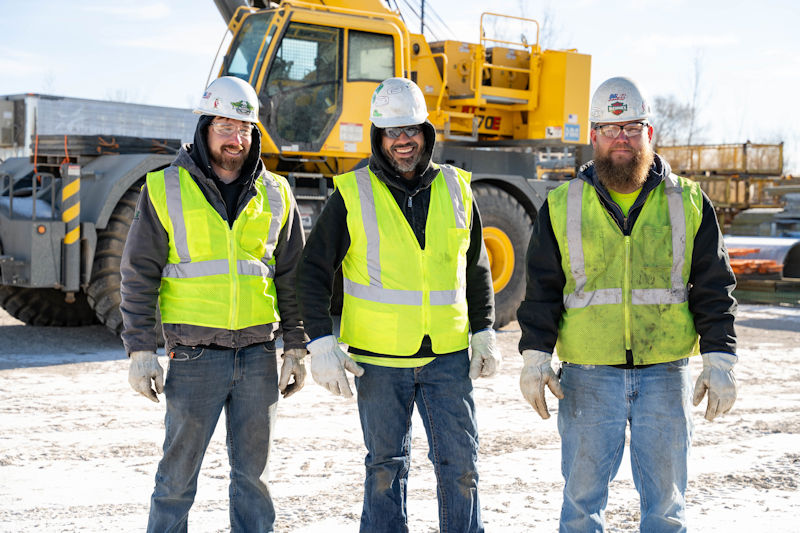When it comes to industrial construction safety, it’s not just about ticking boxes. From confined spaces to electrical systems, industrial jobsites are full of high-risk factors. A single oversight can impact not only worker health but also your facility’s operations, schedules and bottom line. Prioritizing safety means protecting people, project continuity and compliance from day one.
Mike Gervais, McCormick Construction General Superintendent, and Pedro Briones, Safety Manager, came together to outline key insights for clients to consider when choosing a safe contractor. Below, we break down what to look for in a safety program, how to evaluate a industrial contractor’s safety record and what makes our approach to jobsite safety different.
Understanding risks: Why safety comes first
Why is safety such a critical factor on industrial jobsites?
Safety is paramount in industrial construction because these environments involve high-risk activities, heavy machinery, elevated work, electrical systems, confined spaces and hazardous materials. To this end, industrial environments demand more than the bare minimum. Strong safety practices reduce risk and protect the well-being of workers and the project as a whole.
What can poor safety practices cost you?
The risks are far-reaching. Poor safety practices can lead to serious injury or fatalities, project delays, regulatory fines, legal exposure and long-term damage to your company’s reputation. Loss of trust from clients and partners can also create long-term consequences.
How does a strong safety program support project success?
A proactive and robust safety culture limits jobsite disruptions, minimizes insurance and liability costs, and ensures compliance with OSHA and other construction safety standards — all of which protect your investment.
Choosing a safe contractor: What to ask
When choosing a safe contractor, asking the right questions early can prevent issues later.
What should clients look for in a contractor’s safety program?
- A formal, written safety plan
- Routine safety training
- Certifications like OSHA 30 or MSHA
- Strong documentation (e.g., EMR scores, OSHA 300 logs)
- A demonstrated culture of accountability at every level
What are red flags that suggest a contractor doesn’t prioritize safety?
- High EMR (Experience Modification Rate) scores
- Outdated manuals or lack of documentation
- Vague or unclear answers about training or protocols
- Visible jobsite violations (like PPE non-compliance)
What documentation should clients request?
Ask to review the contractor’s EMR, OSHA records, contractor safety programs and examples of job hazard analyses (JHAs). Evidence of pre-task planning and safeety audits is a strong indicator of an organized, reliable team.
How McCormick Construction exceeds safety standards
We are proud to put safety first and are consistently performing beyond the basics. Here’s how:
- Proactive planning: Job Safety Task Analyses (JSTAs) are completed before work begins to ensure all safety measures are in place.
- Daily checklists: These protocols have helped prevent work in unsafe areas before issues arise.
- Team empowerment: Everyone on site is encouraged to speak up and take ownership of safety.
- Responsive support: Our mobile millwright fleet allows us to staff jobs quickly with trained personnel, boosting flexibility without compromising safety.
- Ongoing audits and training: Regular evaluations help us improve and adapt to every jobsite’s needs.
Safety in construction project planning: What clients can do
What questions should you ask when evaluating a contractor?
- “Can you describe your most recent safety training initiative?”
- “How do you empower your team to report unsafe conditions?”
What can facility owners do to support jobsite safety?
- Walk the site regularly
- Attend safety meetings
- Request weekly safety reports
- Stay visible and engaged
How can General Contractors and subs collaborate?
Shared accountability leads to stronger outcomes and fewer surprises.
- Set clear expectations up front
- Align on training and documentation
- Include all teams in pre-task safety planning
Safety as a commitment, not a checklist
A contractor’s approach to industrial jobsite safety tells you more than just how they comply with the rules — it reveals how they lead, plan and protect. We believe safety isn’t a standalone program — it’s part of our culture. Our teams treat every jobsite like their own and that commitment protects both people and projects from day one.

